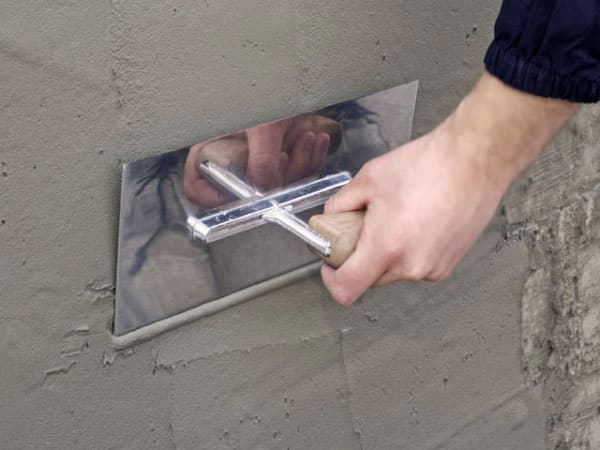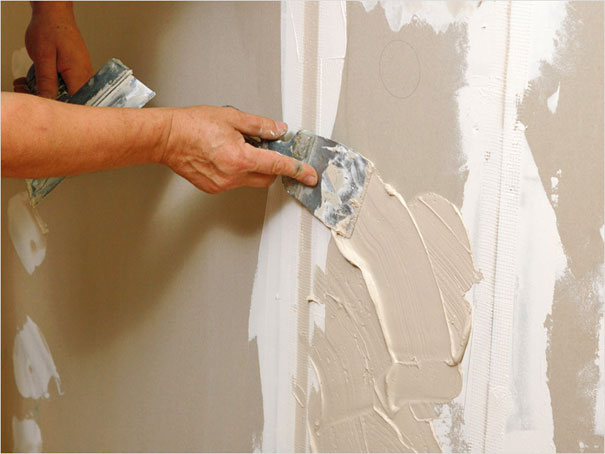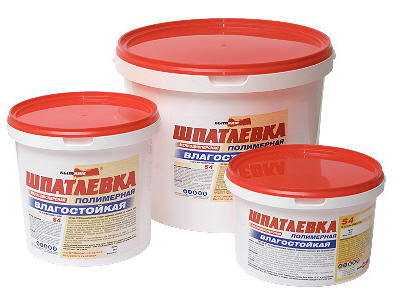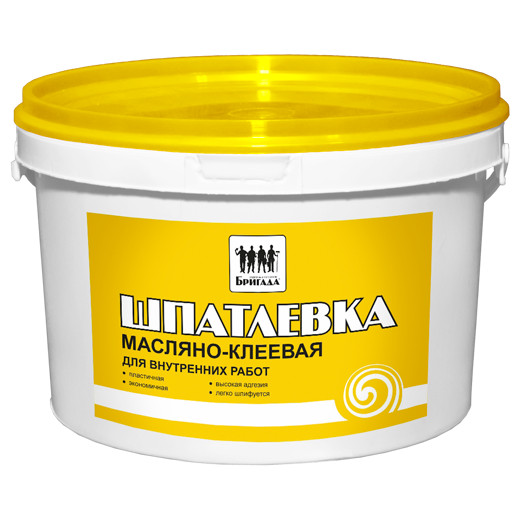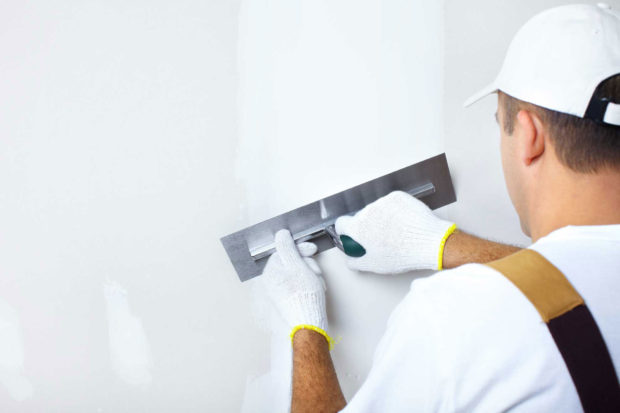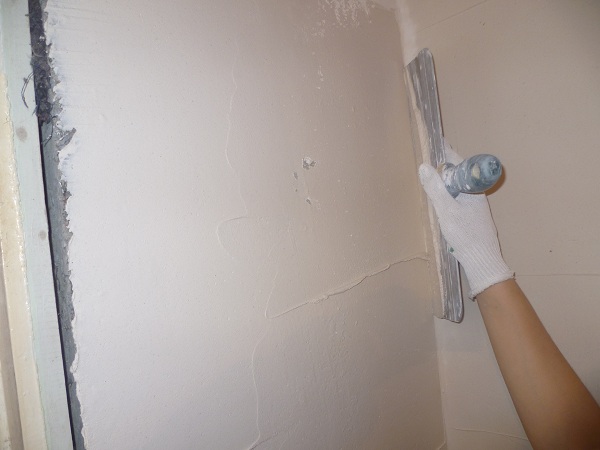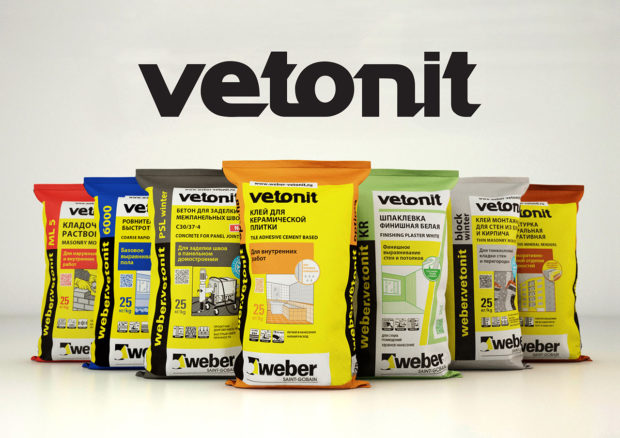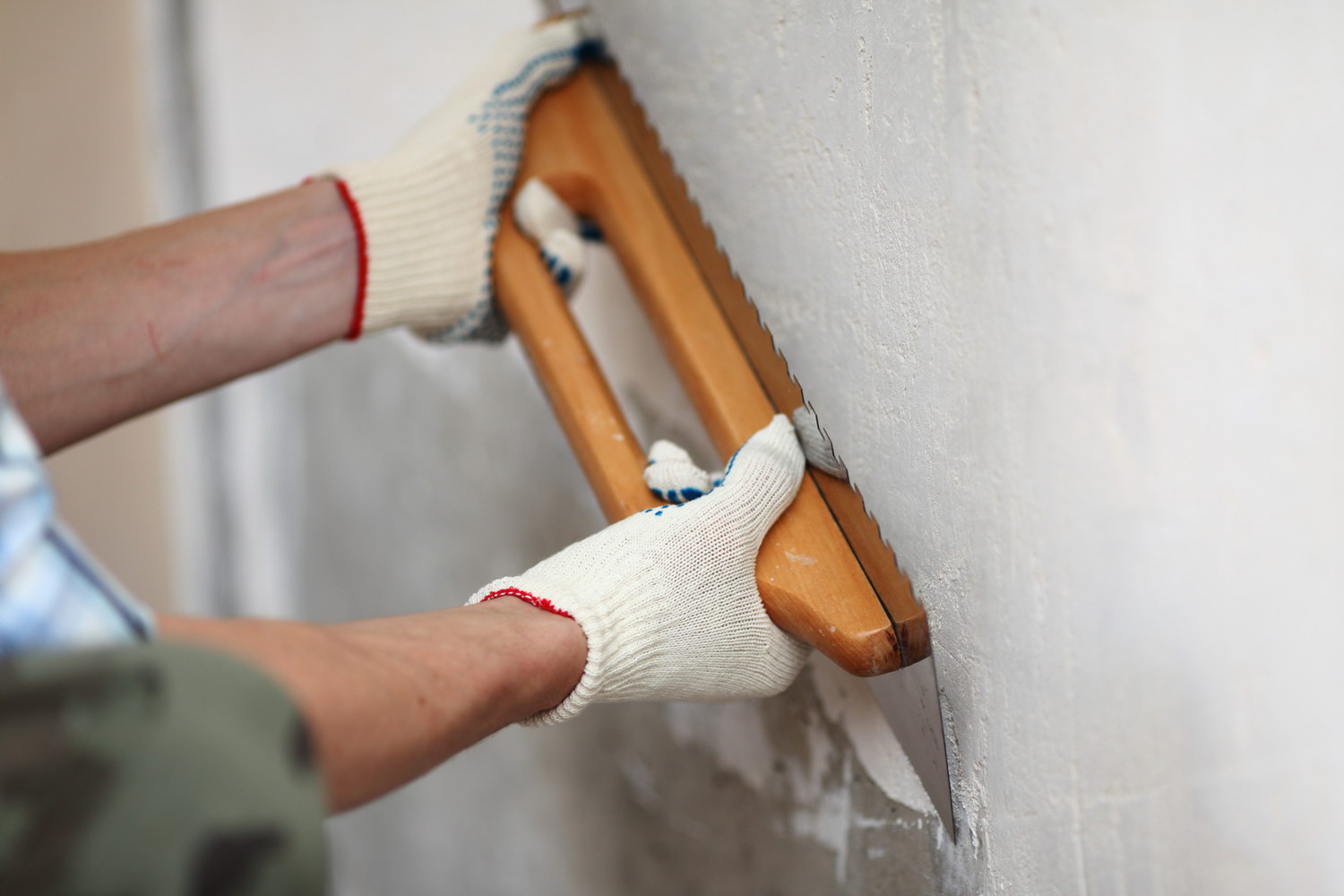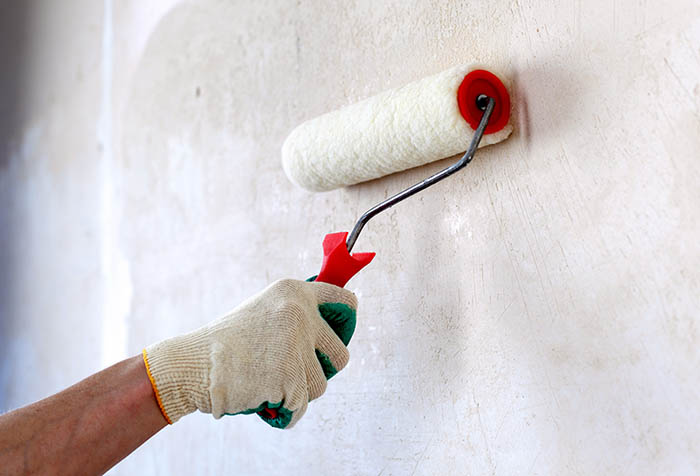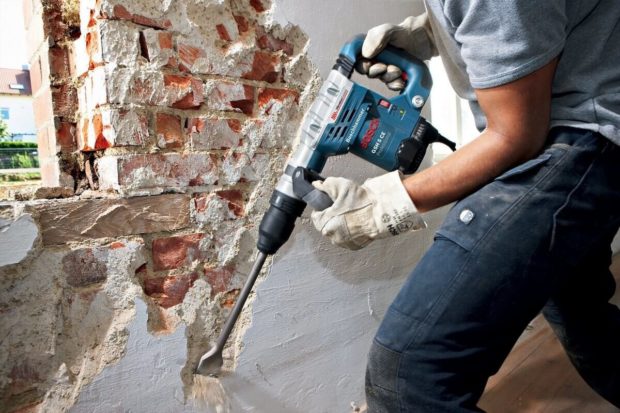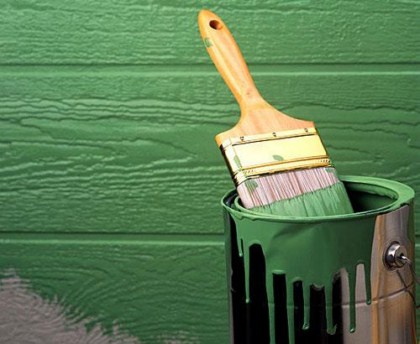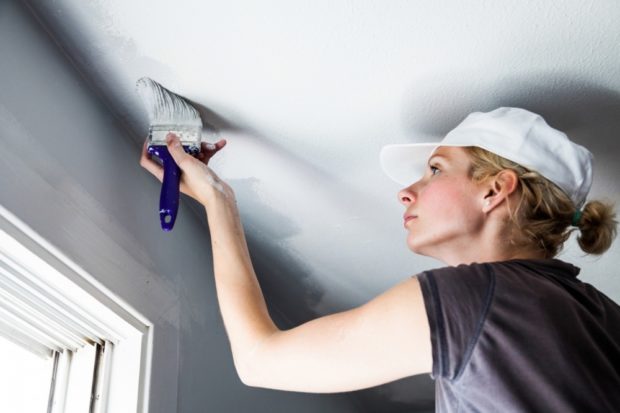7 tips on which putty to choose: types of putty, purpose, manufacturers
Align the walls and it is impossible to prepare them for decorative finishing without putties. They may differ in composition, form of implementation, grain size and some other parameters. Such a variety of putties was created by manufacturers so that in each particular case we can choose the most suitable material: it is easy to guess that a different composition will be needed for internal and external works. The type and material of the surface to be leveled must be taken into account. We offer to dot all the "i" and figure out which putty to choose for walls, ceiling and floor, and which - for drywall and wood.
No. 1. Putty and putty - is there any difference?
A beginner in the field of construction work may be confused by the fact of the existence of two similar words - “putty” and “putty”. Manufacturers add fuel to the fire and use both concepts. In fact, putty and putty are one and the same, just the origin of the words is a little different.
Word "putty" came to us from the German language, more precisely from the word "spatel", which means a small building spatula, which is used to level the mixture. Another name for the material, "Putty", appeared from the word "putty", which, in turn, means the process of applying the mixture with a spatula. Dictionaries allow the equivalent use of both words, but it so happened that in professional vocabulary they often say “putty”, and in colloquial words they say “putty”.
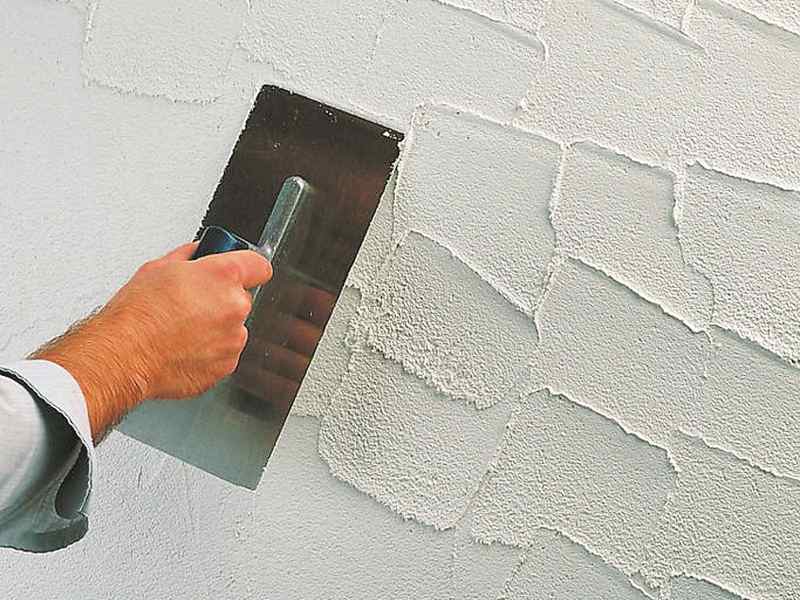
No. 2. Types of putty as intended
According to the purpose of putty, it is customary to divide it into the following types:
- starting (leveling);
- finishing (decorative);
- universal.
The main difference is the graininess of the material.
Starting putties have high grit, excellent strength and adhesion. They are intended for leveling walls with visible defects and differences up to 10-15 mm, can be applied layer from 3 mm to 2 cm. Such compositions can be used as an independent leveling agent, or use them after plasters. To achieve the best result, it is better to apply the starting putty in a couple of layers. You can work with two spatulas: one slightly more - for applying the mixture to the wall, the second - for taking the mixture from the tank. If the wall surface contains not just defects in the form of pits, but has vertical deviations, then you will have to take a long construction rule.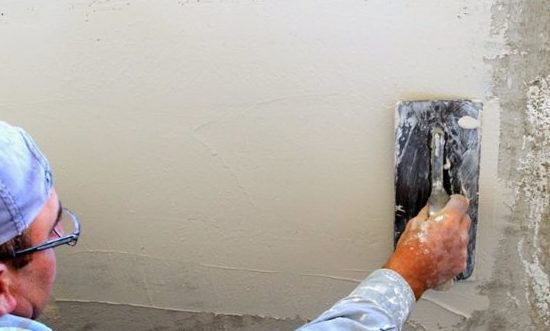
Finishing putty applied on top of the starting one, intended for final wall cladding before decorative decoration (painting, wallpapering) Such compositions are less granular, so they allow you to form a perfectly flat and smooth surface. In terms of strength, the finishing putty is inferior to the starting one, it can be applied 5 mm maximumeasy to process. As in the case with the starting composition, the finish is better to apply in two layers. For subsequent painting, fine-grained putty (100 microns) is selected.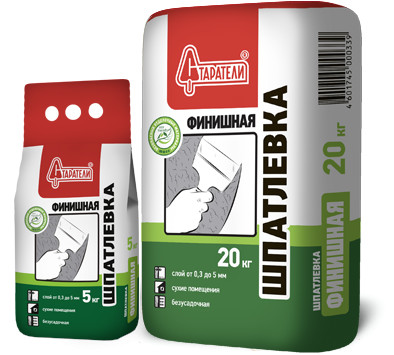
Universal compounds Suitable for both leveling and finishing. It makes sense to use them when the surface is characterized by minimal irregularities and differences.Such putties are more expensive than starting and decorative, but they are inferior in quality to them. If there are serious flaws, it is more advisable to take two separate compositions - you will win by money and by result.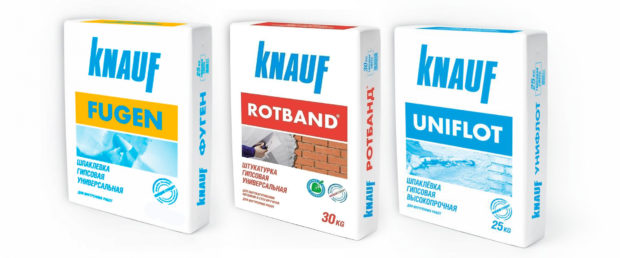
No. 3. Types of putty by degree of readiness
There are few options - putty can be sold in two versions:
- dry mix, requiring dilution with water in strictly defined proportions;
- ready putty.
Dry mixes They are most actively sold, as they are inexpensive and have a longer shelf life. These putties are sold in packages weighing from 5 to 25 kg, they are easy to transport and store. In order to obtain the necessary paste-like putty from a dry powder, it is enough to mix the composition with water in a certain amount. It takes a little time to mix and mix, but the putty obtained in this way quickly sets, so you need to work efficiently, and you won’t be able to knead the material in large batches. To get a solution with clearly defined and specified by the manufacturer parameters, it is necessary to act strictly according to the instructions. Some attribute to the minuses the need to spend time preparing a solution, but, frankly, this is not a very large time cost. The disadvantage can also be called the presence of dust during kneading.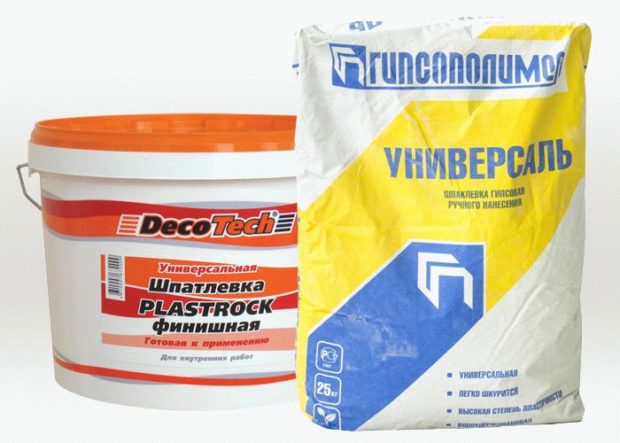
Ready-made compounds sold in buckets or large tanks. It is easy to guess that they can be used immediately, and this saves time and there is no risk of disrupting the proportions, having received putty of completely the wrong quality. Additional tools and containers are also not needed. The shelf life of the finished composition is less than that of dry putty, but much longer than that of dry putty diluted from powder. Ready-made formulations are more expensive than dry ones.
Number 4. Types of putty by composition
Depending on what materials are included, putties are:
- on a cement basis;
- on a gypsum basis;
- polymer putties (this includes acrylic, latex and polymer cement compositions).
Less commonly, but used, are oil-glue, glue and oil putty, as well as putty.
Cement putty
Inexpensive and durable cement putties prepared on the basis of cement, sand and water. Cement is usually taken M400 or M500 brands, sand - small, river, with a minimum amount of impurities. Such compositions are sold in the form of dry mixes, but some masters prepare it themselves, mixing 1 part of cement with 3-4 parts of sand and mixing the solution with water before setting. It should not be too thick, and not too thin. To prepare the right solution, you must have solid experience in performing puttying, so it is much easier to take the dry mixture and dilute it with water.
Advantages of cement putties:
- high strength, according to this parameter, the compositions have no analogues. It is possible to destroy a layer of cement putty by hitting it a hammer;
- moisture resistance, therefore the composition used in rooms with high humidity (bathroom, kitchen, pool) and for facade work;
- resistance to low temperatures;
- low price.
disadvantages:
- complexity of application. Even an experienced specialist in a working day will be able to putty not more than 7-8 m2 surface;
- low elasticity. It is necessary to grind the composition almost immediately after application, until it is dry;
- shrink ability. Often there is a need for reapplying putty;
- cracks may appear on the surface immediately or over time;
- the composition does not adhere well to a smooth surface (for example, monolithic reinforced concrete);
- the composition is not suitable for the treatment of wooden surfaces;
- long drying process.

Gypsum putty
White and plastic gypsum plaster is excellent for preparing walls for painting. It’s easy to get with it. perfectly flat surface. Gypsum can take excess moisture from the air, and then give it back when the air becomes too dry.
Main advantages:
- the ability to create a perfectly smooth surface without roughness, perfect for further painting or other cladding;
- lack of shrinkage;
- gypsum putty lends itself perfectly to leveling;
- the composition dries quickly;
- high degree of fire resistance;
- gypsum passes air, not subject to formation moldsafe for health;
- improves the thermal insulation of the room;
- low price.
Minuses:
- low resistance to moisture and temperature extremes, so the scope of use of gypsum putties is limited exclusively dry heated rooms;
- low strength;
- gypsum putty can accelerate metal corrosion.

Polymer putty
As the name of the composition suggests, it is based on polymers. Such putties provide an ideal result, but are expensive. Depending on which polymer was used, the following compounds are isolated:
- acrylic putty - This is a kind of universal composition. It can be used for leveling. brick, concrete walls, wooden floors, cement surfaces, drywall and metal, as well as for finishing work. With this composition, you can get a perfectly smooth, almost mirror-like surface, which is why often this putty is used for the ceiling. You can apply the composition as a thin layer of 1 mm, or thicker. Acrylic putty suitable for indoor and outdoor work (there is a special composition for facades), can be used in wet roomsIt is distinguished by excellent adhesion with various surfaces, it is odorless and forms a strong layer. It is easy to work with, and hands and tools can be washed with plain water. The material is not afraid of moisture and protects the walls or ceiling from moisture, is easy to sand sand paperdoes not shrink, but is not cheap. On the shelves of stores there are a large number of fakes and low-quality goods, in which there are impurities. They can leave scratches on the surface;
- latex putty prepared on the basis of acrylate latex, great for creating a finish layer. With its help you can get a perfectly smooth surface, however, applying a layer of more than 3 mm is undesirable - the material can crack. The composition is great for working with drywallcan also be used for leveling wooden, brick and concrete surfaces. Scope of use is limited. internal work;
- polymer cement putty - This is actually the same cement, but due to the introduction of polymer components, it has become more ductile. Used for leveling concrete and brick surfaces, can be applied with a layer of up to 2 cm.

Other types of putties
Much less often, but still these types of putty are used:
- oil-glue putty consists of water, drying oil, acrylates, plasticizers and other additives. Intended for internal worksuitable for wood and concrete. It has a specific smell, inferior in properties to many other species, so today it is practically not used;
- oil putty based on drying oil, driers and chalk is used in interior work in the preparation of door and window openings, window sills and other wet places. Suitable for leveling under subsequent finishing with oil paints;
- shpakril can be used for putty skirting boards and leveling plastered surfaces. Sometimes the composition is used to gluing ceramic tiles in dry rooms. When diluted with water, whitewash mix;
- PVA based putty the composition has a lot of antiseptic additives, so that mold and fungus are not afraid of the material. The composition is suitable for leveling concrete, plaster, plasterboard and asbestos-cement surfaces.

No. 5. What putty to choose?
As is clear from the existing assortment, the putty is chosen depending on what material will be leveled, taking into account the peculiarities of the temperature and humidity conditions in the room:
- for walls, you can choose virtually any putty. If it comes to bedrooms, living rooms, nurseries, hallways, offices and other rooms with a normal level of humidity, it is best to take gypsum putty. For work in the bathroom, cement or acrylic putty is suitable;
- for puttying the ceiling usually take an acrylic composition, which allows you to create the most even and smooth surface, but gypsum putty is also quite applicable;
- for putty wooden surfaces it is better to choose an acrylic composition;
- for plasterboard putty suitable acrylic composition, as well as gypsum, when it comes to dry rooms;
- for front and other external works suitable cement and acrylic facade putty;
- for painting it is better to take gypsum or polymer putty - they create an even beautiful layer. Under the wallpaper, you can use cheaper cement.

No. 6. Do-it-yourself wall putty
Putty can be used to level surfaces with minor irregularities and level differences, otherwise plastering or even installation of drywall sheets will be required. Puttying walls and ceilings is easy to do with your own hands:
- surface preparation, which consists in dusting, degreasing and mandatory priming. If it comes to rooms with a high level of humidity, then you can additionally treat the walls with an antifungal agent;
- if you chose a dry mixture, then you must dilute it with the amount of water indicated on the package and mix until a homogeneous solution is obtained. Ready putty before use also does not interfere with a little mix;
- starting putty best applied with two spatulas. With the smaller one, they scoop up the composition from the container and apply it to the larger one. It is also convenient for them to remove the remnants of the mixture. The size of the large spatula depends on the degree of surface roughness. If the differences are significant, then it is better to take a rule (maybe up to 1.5 m long) with an integrated level and control the quality of the work performed. If the starting putty is applied in two layers, between them it is better to use a reinforcing reinforcing mesh and a primer layer;
- finishing putty applied after the starting layer has dried, but some masters ignore it if dense wallpaper, decorative plaster, tile and other materials are used as cladding, except for ordinary paint. Some people prefer to wash the finish layer with a primer solution and sand it to completely get rid of all the bumps.

Number 7. Large manufacturers of putty
The putty market today is oversaturated - you can find a mixture of any composition for any type of surface and, most interestingly, at almost any price. We all like to save money, especially when it seems that there is no difference between two similar products. When it comes to putties, saving does not seem like such a reasonable thing, because hardly anyone would want the putty layer to crack and fall off after a few months along with the paint. Trust is better products of large manufacturers:
- Knauf - A large German company, whose factories are today located around the world, including in Russia, which allows us to buy quality products at more affordable prices. Knauf putties are represented by cement, gypsum and polymer compounds, are sold in dry and finished form. There are solutions for all areas of use. The company's special solution is gypsum putty with components that protect against x-rays;
- Ceresit - products of a large concern, which is very popular all over the world. Under the Ceresit brand, cement and polymer putties are sold;
- Tikkurila - Another well-known concern, which, among other things, produces putties. The company offers acrylic moisture resistant and gypsum compounds. Also in the assortment is putty Euro Filler Light, which is easy to apply and does not need to be polished - the surface itself becomes flat. The color of the composition can be selected from 15 offered. The company also offers Spakkeli wood putty, which is suitable for processing doors, furniture and other wooden surfaces indoors;
- Vetonit offers polymer, cement compositions and putties on an organic binder. There is a composition that not only aligns the seams on the drywall, old painted surfaces and wallpapers, but also allows you to create a textured decorative surface;
- Kreisel - A German company that has factories in 20 countries, incl. in Russia. Putties are represented by cement and gypsum compounds;
- "Prospectors" - putties of domestic production. The quality is not bad, prices are affordable. The range is represented by gypsum, cement, polymer-cement and polymer compositions, which are suitable for starting and finishing work in dry and wet rooms, as well as for outdoor work;
- Volma - Another domestic manufacturer that has established itself well. The range of compositions is very wide. There are gypsum and polymer putties with different particle sizes. There are solutions for any situation.
You can also advise the products of "Ural building mixtures", "Armstrong" and "Euro gypsum".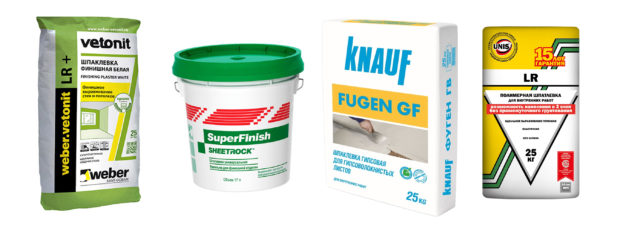
When buying, do not forget to inspect the integrity of the packaging, pay attention to the expiration date and, if desired, ask for certificates of conformity - they must be from any responsible manufacturer and seller.

